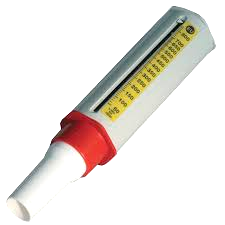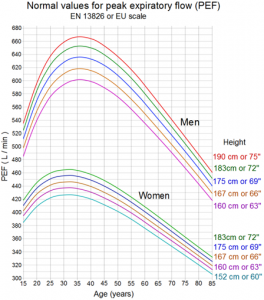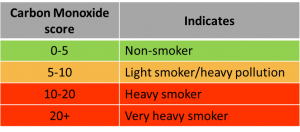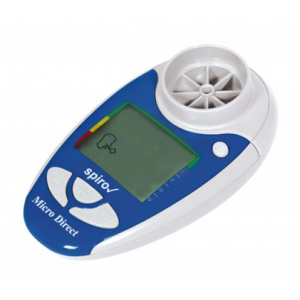Peak flow is a measure of how quickly you can get air out of your lungs.
To measure this, you reset the peak flow meter to zero, take a deep breath and blow into the meter as hard as you can. At the doctor’s, you do this three times and the best score is written down.
What your “normal” peak flow is depends on your age and height.
If your peak flow is high for your height and age, then you have super strong lungs! If it is low, this can be due to what doctors call an “obstruction” so things like coughs, colds and hay fever can reduce your peak flow. If you have asthma, it can be lower too.


Heart rate is a measure of how many times your heart beats in a minute.
This can be measured with lots of different equipment – you can even do this yourself by finding your pulse in your wrist and counting how many beats you can feel in a minute (it helps to look at a clock when doing this!).
Most people have a resting heart rate of 60-100 beats per minute (bpm). Low heart rates, below 60bpm, can be due to many things including being very athletic – some athletes have a resting heart rate of 40bpm. Some medicines can slow your heart rate as well.
High heart rates of over 100bpm can happen when you are being very active or getting excited.


Spirometers give you lots of information about your lungs.
To use the spirometer, you first have to enter your age, height and gender. Then, you insert a tube at the top and blow into the tube as hard as you can and for as long as you can- until you feel like there is nothing left in your lungs. This can be really tricky!
FEV stands for “forced expiratory volume” which is just a fancy way of saying how much you can breathe out when trying really hard! FEV1 is the amount of air you blow out in one second. FEV6 is the amount of air you blow out in 6 seconds.
FEV1/FEV6 is, like the peak flow, another way doctors can test if the patient has an airway obstruction. Most people have an FEV1/FEV6 of over 0.7, anything below this is classed as an obstruction. This can be caused by a coughs, colds, hay fever or things like asthma.
Lung age is calculated using all the FEV measurements plus your height, age and gender (which is why the spirometer asks for these things). Your lung age should be pretty similar to your actual age. If it is a bit younger then that is a good thing! If your lungs are a bit older, don’t worry! If you lung age is much older than your age, this may be due to being ill when using the spirometer or things like smoking.

We inspire the next generation of medics and scientists by taking real medical and sports science equipment into schools, colleges & events all over the UK.
Company: MedicFest Ltd, trading as Medical Mavericks. Registered in England and Wales. Company Number: 12021679
© 2024 Medical Mavericks. All rights reserved.